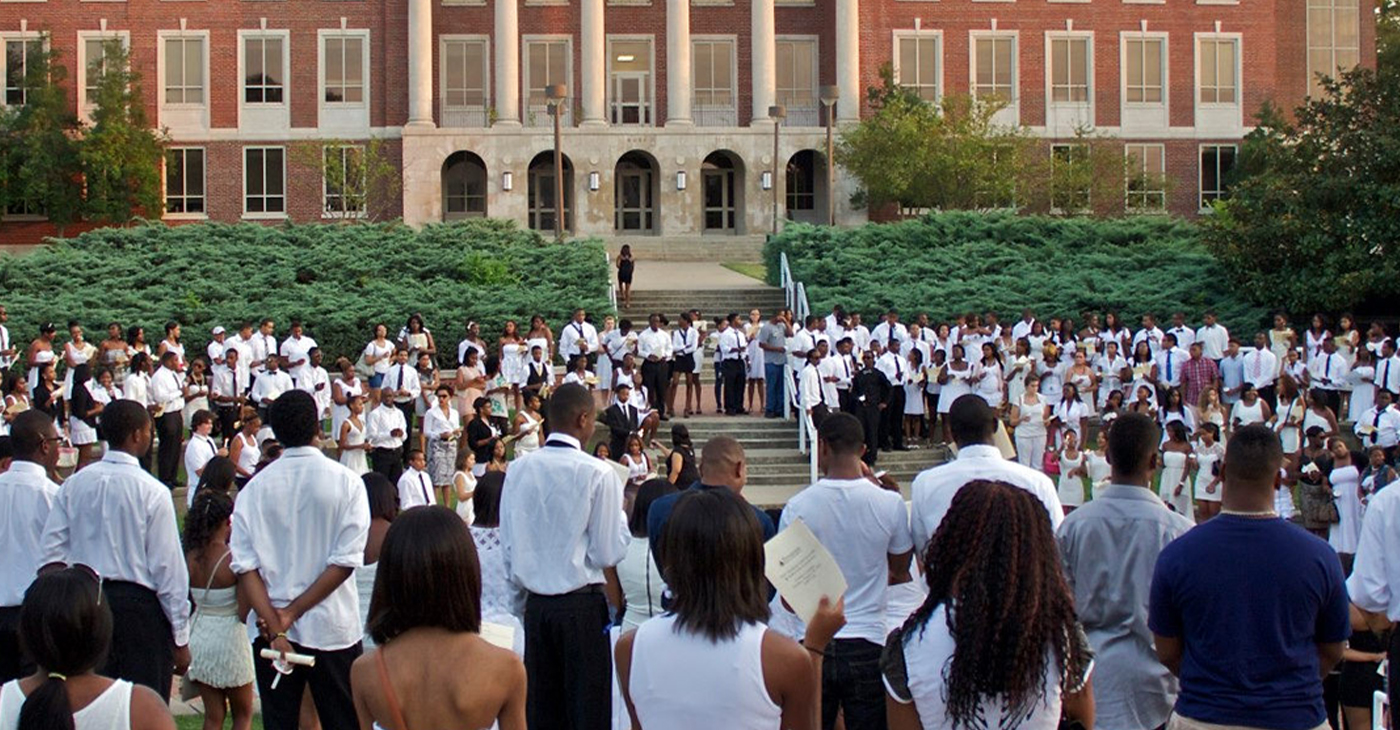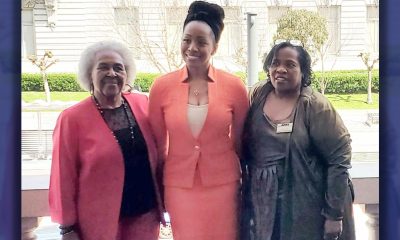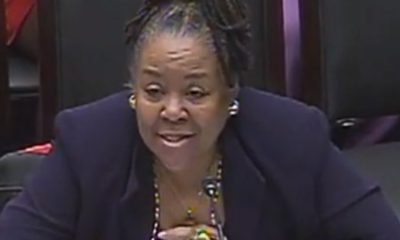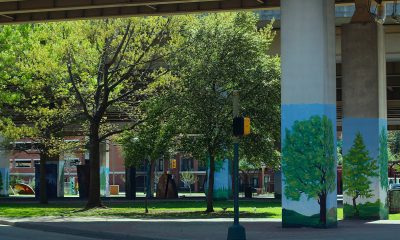#NNPA BlackPress
COMMENTARY: Faith and Leadership
NNPA NEWSWIRE — This upcoming weekend Laverne Whitehead Reed will be installed as the senior pastor at Warren Avenue Christian Church in Dallas, TX. I’m excited for her, the church, and the community for starters, because she clearly has taken the necessary steps for this opportunity, for a time such as this. In her words, she is “grateful that God has given me this opportunity to serve.”
“My Truth”
By Cheryl Smith, Publisher of I Messenger Media, Texas Metro News
Don’t you just love seeing women in positions of power, influence and leadership? In answering her question recently during the 2019 Miss Universe Pageant, Miss South Africa Zozibini Tunzi of Eastern Cape, talked about women in leadership. The very favorable response to her statement was encouraging and impressive.
She ended up victorious, winning the title of Miss Universe! Now, too often women are discouraged or either sometimes we discourage ourselves from pursuing leadership roles because we are too young, too old, too big, too small, uneducated, over educated, we don’t have the look and I could go on and on. Sadly, some of us think that only men should hold certain positions of leadership.
I love seeing the responses I get from women, young ladies, and girls when I compliment them. Maybe if we affirmed one another more the world would be a much better place. Someone said, if women were running the world, we’d have fewer wars. Someone also said, if the woman of the house is not happy, nary a soul in the house will be either!
I’ve seen, on numerous occasions, the marginalization of women. If we are absolutely truthful, there were men AND WOMEN who didn’t have a legitimate reason for not voting for Hillary Clinton for President of the U.S. Sadly, deep in their hearts, they couldn’t bring themselves to vote for a woman. There are still those who want to keep women out of the boardrooms, pulpits, locker rooms, and yes, the White House. Women deserve leadership roles.
We don’t want to hear about “flaws,” because that hasn’t stopped men from serving. Women have shown up and shown out, time and time again. Women have always been the sounding board and the voice of reason. I am so grateful to have so many dynamic women who, some I have never met, but know their works, paved the way for me.
Which brings me to my truth. This upcoming weekend Laverne Whitehead Reed will be installed as the senior pastor at Warren Avenue Christian Church in Dallas, TX. I’m excited for her, the church, and the community for starters, because she clearly has taken the necessary steps for this opportunity, for a time such as this. In her words, she is “grateful that God has given me this opportunity to serve.”
Actually, she has lived a life of service, living “God’s Plan versus Reed’s Plan.”
She’s been a nurse, an educator and eventually she became a Chaplain, before serving in various clergy positions at hospitals and churches. Currently serving as Southwest Regional Chaplain for Delta Sigma Theta Sorority, Inc., Dr. Reed has a number of firsts in her portfolio, including becoming the first African Methodist Episcopal Board Certified Chaplain (BCC) in the state of Texas by the Association of Professional Chaplains (APC), first African American to serve as Secretary of the Brite Divinity School Student Government, and first professional female and African American Chaplain at Baylor Carrollton Medical Center where she was responsible for the development of the Pastoral Care Department.
Hailing from Memphis, TN, Dr. Reed actually marched with Dr. Martin Luther King, Jr. Once she moved to Texas she earned an Associate of Arts, Bachelor of Science, Master of Divinity and Doctorate of Ministry degrees. Add a Diploma of Vocational Nursing and completing further studies at The Interdenominational Theological Center in Atlanta, GA; clearly she was building a solid foundation. A past president of the Community Ministers’ Fellowship, the Texas Christian University alum said you must “always be open and available to what God has planned for you.”
She has served as Interim Pastor of Romine Avenue Christian Church (Disciples of Christ). A retired Healthcare Chaplain and retired Ordained Itinerant Elder of the African Methodist Episcopal Church. She has also served as Minister of Counseling and Life Support at Smith Chapel AME Church, Dallas. Her Pastoral appointments included Dean of Richard Allen Chapel at Paul Quinn College and Senior Pastor of St. James A.M.E. Church, Denton, TX, the oldest African American congregation in Denton County.
She is a member of several professional and civic organizations. A certified crisis intervention counselor, she is a life member of the NAACP and the immediate past Texas/ New Mexico State Chaplain for Delta Sigma Theta Sorority, Inc. It is important to note that as she prepares for her installation and looks forward to the Church celebrating 150 years in existence, Dr. Reed realizes that Church is not just the building, it’s a place where they will address the whole individual and have a presence throughout the community.
It’s an exciting time as she invites everyone to come out for the new beginnings and new works as Warren Avenue Christian Church looks at the needs of the people and the community. Pastoral Installation Celebration: December 14, 2019 at 7:08 p.m. a Pre-Installation Celebratory Musical with Mrs. Gladys Facen, Minister of Music and Dr. Glenn Nixon, Guest Musician. December 15, 2019 at 10:30 a.m. Morning Service with Rev. Dr. Marshall Hobbs Sr. and 3:08 p.m. Afternoon Service with Rev. Dr. Ouida E. Lee Come out and see what women do when given the opportunity!
#NNPA BlackPress
IN MEMORIAM: Ramona Edelin, Influential Activist and Education Advocate, Dies at 78
NNPA NEWSWIRE — Born on September 4, 1945, in Los Angeles, California, activist Ramona Edelin’s early years were marked by a commitment to education and social justice. According to her HistoryMakers biography, after graduating from Fisk University with a Bachelor’s degree in 1967, she pursued further studies at the University of East Anglia in England. She earned her master’s degree before completing her Ph.D. at Boston University in 1981.
The post IN MEMORIAM: Ramona Edelin, Influential Activist and Education Advocate, Dies at 78 first appeared on BlackPressUSA.

By Stacy M. Brown, NNPA Newswire Senior National Correspondent
@StacyBrownMedia
Once upon a time, Black Americans were simply known as colored people, or Negroes. That is until Ramona Edelin came along. The activist, renowned for her pivotal roles in advancing civil rights, education reform, and community empowerment, died at her D.C. residence last month at the age of 78. Her death, finally confirmed this week by Barnaby Towns, a communications strategist who collaborated with Dr. Edelin, was attributed to cancer.
Born on September 4, 1945, in Los Angeles, California, Edelin’s early years were marked by a commitment to education and social justice. According to her HistoryMakers biography, after graduating from Fisk University with a Bachelor’s degree in 1967, she pursued further studies at the University of East Anglia in England. She earned her master’s degree before completing her Ph.D. at Boston University in 1981.
Edelin’s contributions to academia and activism were manifold. She was pivotal in popularizing the term “African American” alongside Rev. Jesse L. Jackson in the late 1980s.
Jackson had announced the preference for “African American,” speaking for summit organizers that included Dr. Edelin. “Just as we were called Colored, but were not that, and then Negro, but not that, to be called Black is just as baseless,” he said, adding that “African American” “has cultural integrity” and “puts us in our proper historical context.”
Later, Edelin told Ebony magazine, “Calling ourselves African Americans is the first step in the cultural offensive,” while linking the name change to a “cultural renaissance” in which Black Americans reconnected with their history and heritage.
“Who are we if we don’t acknowledge our motherland?” she asked later. “When a child in a ghetto calls himself African American, immediately he’s international. You’ve taken him from the ghetto and put him on the globe.”
The HistoryMakers bio noted that Edelin’s academic pursuits led her to found and chair the Department of African American Studies at Northeastern University, where she established herself as a leading voice.
Transitioning from academia to advocacy, Edelin joined the National Urban Coalition in 1977, eventually ascending to president and CEO. During her tenure, she spearheaded initiatives such as the “Say Yes to a Youngster’s Future” program, which provided crucial support in math, science, and technology to youth and teachers of color in urban areas. Her biography noted that Edelin’s efforts extended nationwide through partnerships with organizations like the National Science Foundation and the United States Department of Education.
President Bill Clinton recognized Edelin’s expertise by appointing her to the Presidential Board on Historically Black Colleges and Universities in 1998. She also co-founded and served as treasurer of the Black Leadership Forum, solidifying her standing as a respected leader in African American communities.
Beyond her professional achievements, Edelin dedicated herself to numerous boards and committees, including chairing the District of Columbia Educational Goals 2000 Panel and contributing to the Federal Advisory Committee for the Black Community Crusade for Children.
Throughout her life, Edelin received widespread recognition for her contributions. Ebony magazine honored her as one of the 100 Most Influential Black Americans, and she received prestigious awards such as the Southern Christian Leadership Award for Progressive Leadership and the IBM Community Executive Program Award.
The post IN MEMORIAM: Ramona Edelin, Influential Activist and Education Advocate, Dies at 78 first appeared on BlackPressUSA.
#NNPA BlackPress
Tennessee State University Board Disbanded by MAGA Loyalists as Assault on DE&I Continues
NNPA NEWSWIRE — Recent legislative actions in Tennessee, such as repealing police reform measures enacted after the killing of Tyre Nichols, underscore a troubling trend of undermining local control and perpetuating racist agendas. The new law preventing local governments from restricting police officers’ authority disregards community efforts to address systemic issues of police violence and racial profiling.
The post Tennessee State University Board Disbanded by MAGA Loyalists as Assault on DE&I Continues first appeared on BlackPressUSA.

By Stacy M. Brown, NNPA Newswire Senior National Correspondent
@StacyBrownMedia
Tennessee State University (TSU), the state’s only public historically Black college and university (HBCU), faces a tumultuous future as Gov. Bill Lee dissolved its board, a move supported by racist conservatives and MAGA Republicans in the Tennessee General Assembly, who follow the lead of the twice-impeached, four-times indicted, alleged sexual predator former President Donald Trump. Educators and others have denounced the move as an attack on diversity, equity, and inclusion (DE&I) and a grave setback for higher education.
Critics argue that TSU’s purported financial mismanagement is a manufactured crisis rooted in decades of underinvestment by the state government. They’ve noted that it continues a trend by conservatives and the racist MAGA movement to eliminate opportunities for Blacks in education, corporate America, and the public sector.
Gevin Reynolds, a former speechwriter for Vice President Kamala Harris, emphasizes in an op-ed that TSU’s financial difficulties are not the result of university leadership because a recent audit found no evidence of fraud or malfeasance.
Reynolds noted that the disbanding of TSU’s board is not an isolated incident but part of a broader assault on DE&I initiatives nationwide. Ten states, including Tennessee, have enacted laws banning DE&I policies on college campuses, while governors appointing MAGA loyalists to university trustee positions further undermine efforts to promote inclusivity and equality.
Moreover, recent legislative actions in Tennessee, such as repealing police reform measures enacted after the killing of Tyre Nichols, underscore a troubling trend of undermining local control and perpetuating racist agendas. The new law preventing local governments from restricting police officers’ authority disregards community efforts to address systemic issues of police violence and racial profiling.
The actions echo historical efforts to suppress Black progress, reminiscent of the violent backlash against gains made during the Reconstruction era. President Joe Biden warned during an appearance in New York last month that Trump desires to bring the nation back to the 18th and 19th centuries – in other words, to see, among other things, African Americans back in the chains of slavery, women subservient to men without any say over their bodies, and all voting rights restricted to white men.
The parallels are stark, with white supremacist ideologies used to justify attacks on Black institutions and disenfranchise marginalized communities, Reynolds argued.
In response to these challenges, advocates stress the urgency of collective action to defend democracy and combat systemic racism. Understanding that attacks on institutions like TSU are symptomatic of broader threats to democratic norms, they call for increased civic engagement and voting at all levels of government.
The actions of people dedicated to upholding the principles of inclusivity, equity, and justice for all will determine the outcome of the ongoing fight for democracy, Reynolds noted. “We are in a war for our democracy, one whose outcome will be determined by every line on every ballot at every precinct,” he stated.
The post Tennessee State University Board Disbanded by MAGA Loyalists as Assault on DE&I Continues first appeared on BlackPressUSA.
#NNPA BlackPress
Braxton Haulcy and the Expansion of Walker|West Music Academy
May 24, 2023 – Walker West Music Academy gets an early start on expansion. Join us for a Wednesday episode of The …
The post Braxton Haulcy and the Expansion of Walker|West Music Academy first appeared on BlackPressUSA.

May 24, 2023 – Walker West Music Academy gets an early start on expansion. Join us for a Wednesday episode of The …
The post Braxton Haulcy and the Expansion of Walker|West Music Academy first appeared on BlackPressUSA.
-

 Activism4 weeks ago
Activism4 weeks agoOakland Post: Week of March 27 – April 2, 2024
-

 #NNPA BlackPress4 weeks ago
#NNPA BlackPress4 weeks agoBeloved Actor and Activist Louis Cameron Gossett Jr. Dies at 87
-

 Community1 week ago
Community1 week agoFinancial Assistance Bill for Descendants of Enslaved Persons to Help Them Purchase, Own, or Maintain a Home
-

 Activism3 weeks ago
Activism3 weeks agoOakland Post: Week of April 3 – 6, 2024
-

 Business1 week ago
Business1 week agoV.P. Kamala Harris: Americans With Criminal Records Will Soon Be Eligible for SBA Loans
-

 Activism2 weeks ago
Activism2 weeks agoOakland Post: Week of April 10 – 16, 2024
-

 Community1 week ago
Community1 week agoAG Bonta Says Oakland School Leaders Should Comply with State Laws to Avoid ‘Disparate Harm’ When Closing or Merging Schools
-

 Community6 days ago
Community6 days agoOakland WNBA Player to be Inducted Into Hall of Fame
























































